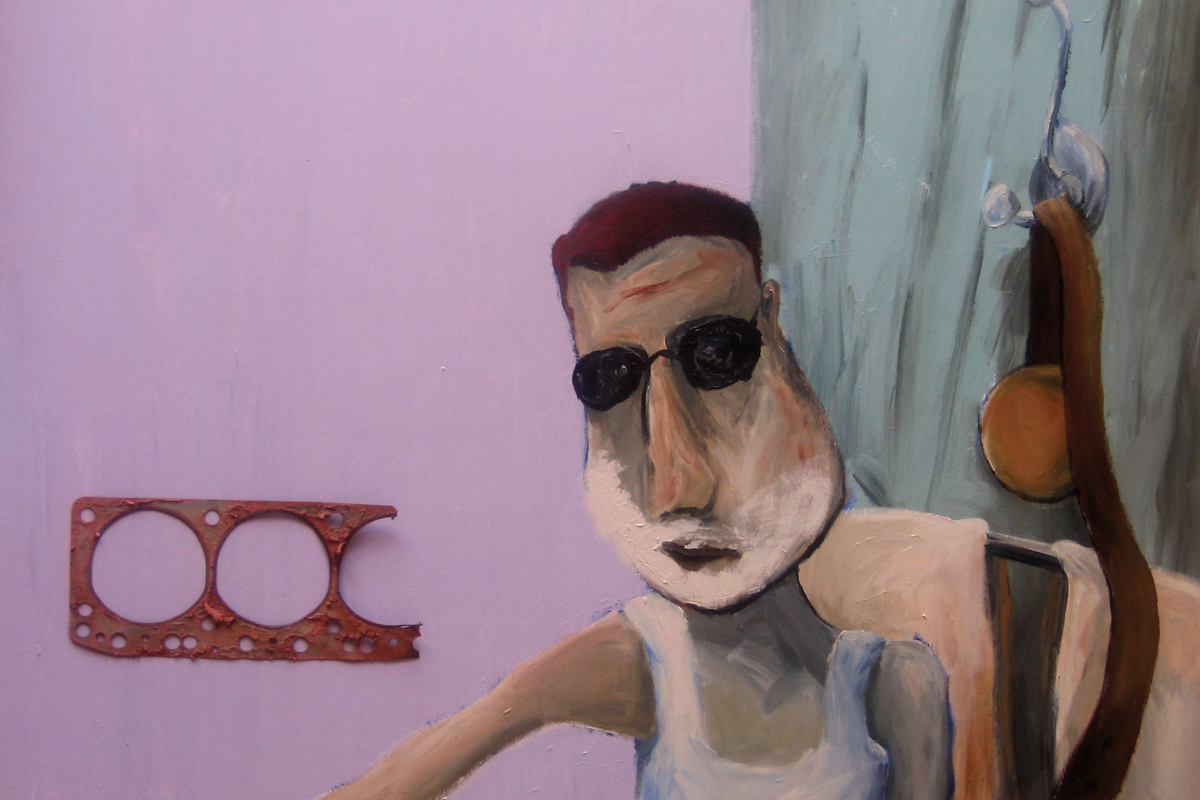Exhibition feature article written by Mitchel McInnis
Beauty is a tricky concept in contemporary art. There are multitudes of painters willing to dish beauty up to viewers by the bucketful—obvious, unmistakable and without mystery. Unfortunately, such painters are plentiful, and they tend to be the darlings of far too many commercial galleries. Painter Brad Bunkers stands in stark contrast to these painters, demanding more subtlety and thoughtfulness from his viewers and collectors.
“Salvaged,” Bunkers’ series of paintings, displays a heightening of his craft. As Bunkers described it during a recent conversation in his studio, “Salvaged” is filled with “subtle forms of pain, subtle forms of beauty.” A rumination on a family that owns a salvage yard, this series is a delight for discerning viewers, engaging them on many levels.
Bunkers’ work defies the obvious and requires a careful eye. You have to spend time with his brushstrokes, with his choices. He’s been painting since he was very young, and his brushstrokes display all the improvisational aplomb of a jazz musician, as well as the accomplishment required to achieve such improvisation. Bunkers is no ordinary painter, and he requires a less than ordinary viewer.
During our conversation, Bunkers pointed to Robert Motherwell as one of the painters he enjoys and respects. There’s a quote from Motherwell that digs into Bunkers’ work rather adroitly: “Most painting in the European tradition was painting the mask. Modern art rejected all that. Our subject matter was the person behind the mask.”
Spending a little bit of time with Bunkers’ work, you notice the mask-like quality of his faces, that his characters have no eyes. Though not directly taken from painters like Modigliani or Edward Hopper, these mask-like, eyeless qualities follow in the tradition of Motherwell’s words. Bunkers challenges his viewers to cultivate an intimacy with his work, to rely on more than the mask.
Spending a lot of time with his paintings, one delves into the narratives—connotative and denotative—that lurk behind the masks. They suggest many of the families in the Dakotas, Montana and Wyoming who allow their lives to live them, rather than the reverse. Bunkers mines that territory as well as the personal mythology of their lives. He grew up in South Dakota, and is familiar with the stories he depicts. Considering his work a form of self-exploration rather than messages laden in pigment, Bunkers has no agenda. He hopes for thoughtful, careful viewers who are as playful as they are experienced.
Bunkers is haunted by difficult beauty, with finding it and depicting it. Rescuing the mundane is a poet’s notion; Bunkers is a painter with a poet’s sensibilities.
The type of experimentation Bunkers embraces is not unusual among painters, but it is unusual among painters in the western United States. Painting by painting, he is carving out a very unique promontory for himself. He is equally devoted to craft and experimentation; he is a painter constantly challenging himself, challenging his form.
“Salvaged” sustains viewers in a rare fashion. Juxtaposing formal elements of the paintings themselves with the narrative elements of the vignettes which link them together. His work reminds us what contemporary artists can convey when they have spent as much time considering their craft as their personal experience.
A Personal note: Mitchel McInnis was a dear friend and collaborator who is no longer with us. Mitchel’s deep love of art, his brilliant writing, his child-like curiosity, his tenderness still burn bright in the hearts of those of us who had the privilege of walking on this earth next to him. Thank you friend.
© All rights reserved


0 Comments